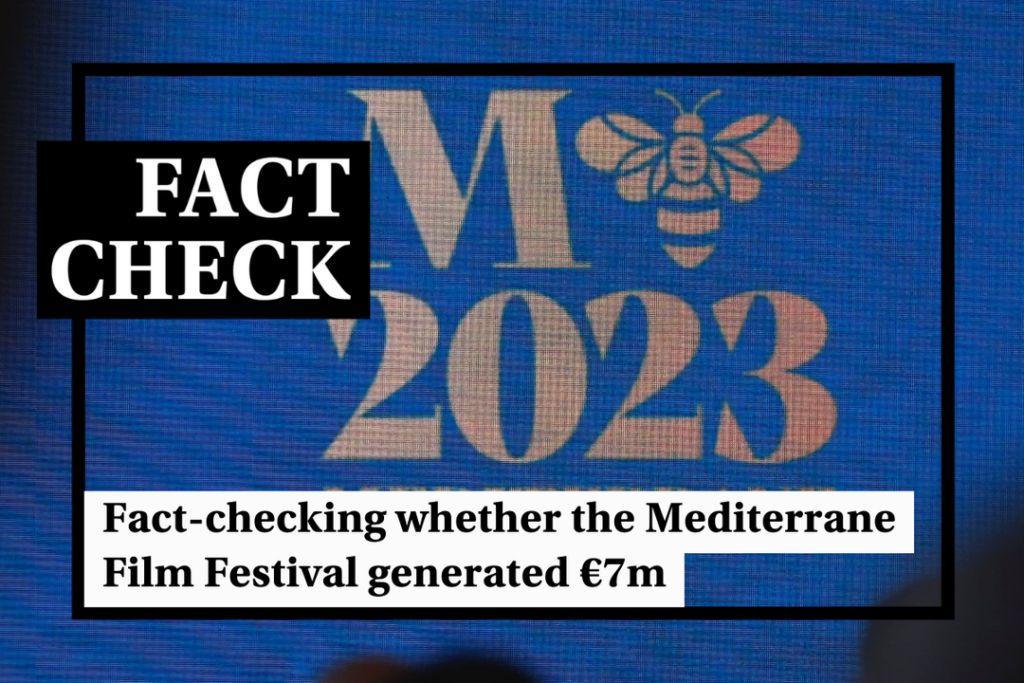A report into the controversial Mediterrane Film Festival was quietly tabled in parliament early March, minutes before the parliamentary debate into the findings of the public inquiry into the death of Jean Paul Sofia kicked off.
The first edition of the Mediterrane Film Festival was held in Malta last summer, ostensibly to celebrate Malta’s film industry.
Questions had been raised about the festival’s “exorbitant” cost, with reports of lavish spending on guests and a gala awards night, complete with live orchestra. The festival was entirely publicly-funded and organised by the Malta Film Commission.
One guest, film journalist Steven Weintraub said he was “absolutely floored” by his accommodation when he was invited to cover the festival, while former film commissioner Oliver Mallia described the event as “one big gala dinner” rather than a film festival.
Authorities had defended the festival’s expenditure, with Tourism Minister Clayton Bartolo last July promising to publish a report into its exact cost and return by October. The report, authored by audit firm RSM, was eventually published late last week.
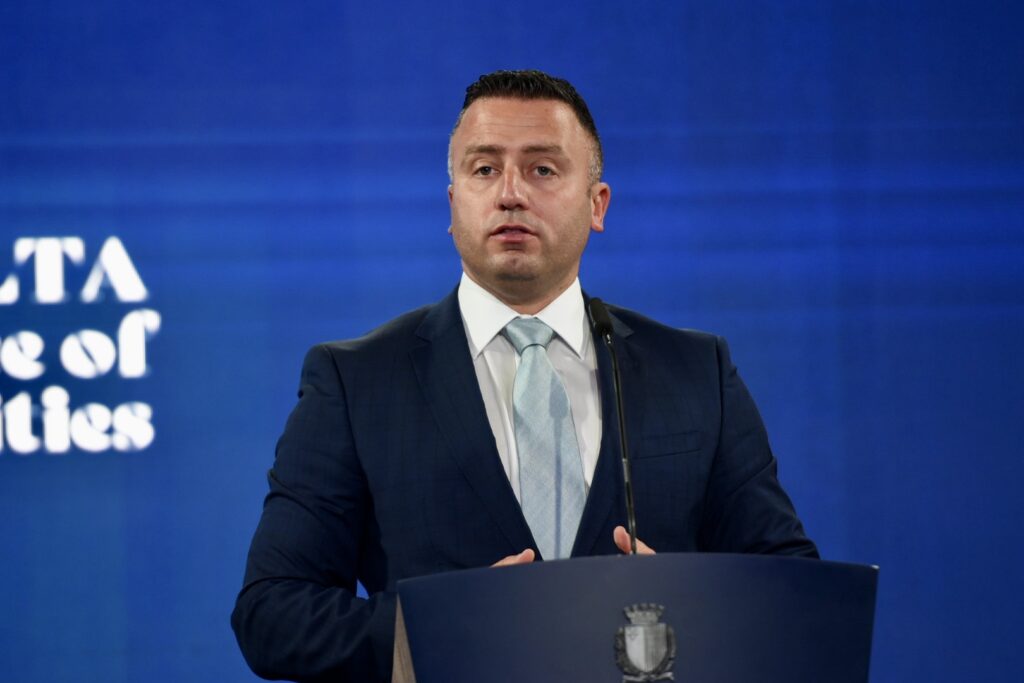
It found that the festival ended up costing a total of €3.8m, claiming that it generated some €7m in return.
What was the money spent on?
The report classifies the festival’s expenses across several broad areas but offers scant little detail into what the money was actually spent on.
For instance, it says that the largest chunk, some €2.4m, was spent on creative and artistic activities, but it’s unclear what these actually were. This is likely to include fees charged by artists to appear at the festival, as well as musicians and any other performers who performed at any of the festival’s events.
The report reveals that almost €650,000 were spent on flights or accommodation, with a further almost €90,000 going towards “food and beverage service activity” (most likely catering).
A little over €375,000 was spent to market and promote the festival, while just under €140,000 was spent on “real estate activities”, most likely to be the cost of renting spaces where the festival’s activities were held.
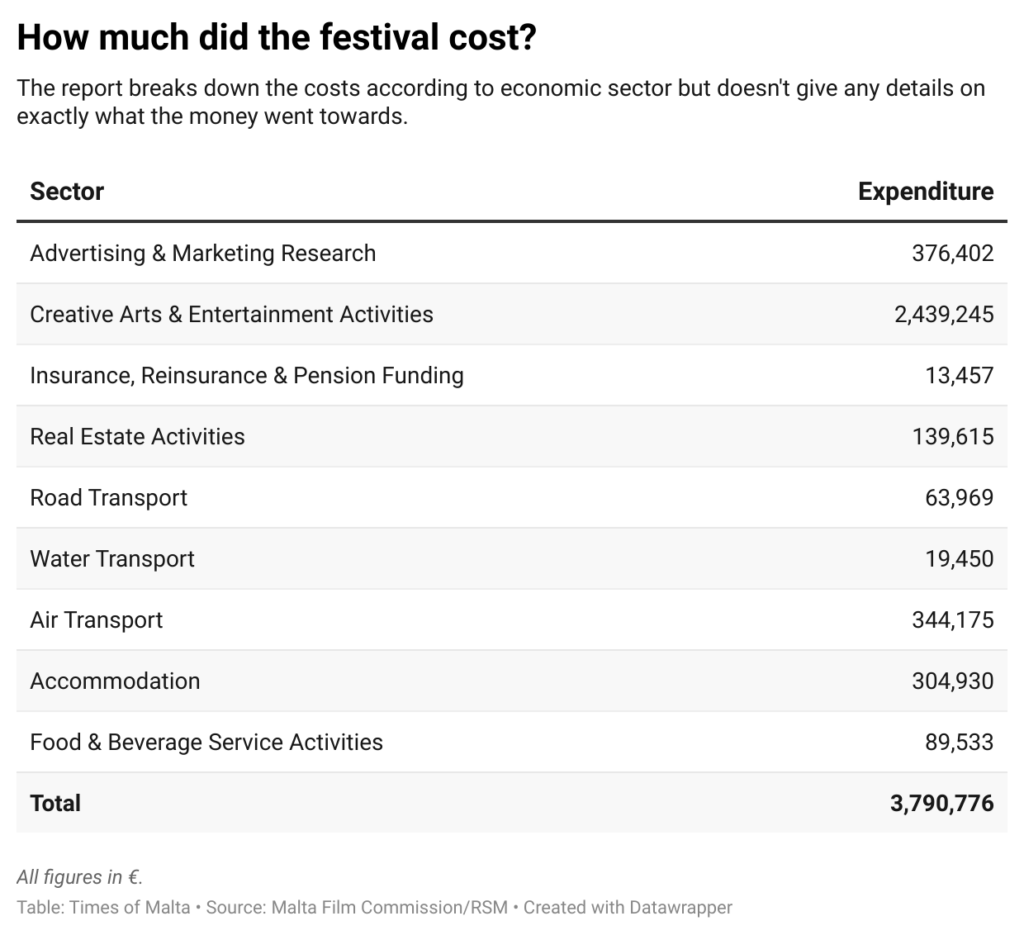
In total, the report says that all costs amounted to €3,790,776. It doesn’t break down where this money was paid from, but the festival is widely believed to have been entirely funded through taxpayers’ money.
How many people attended the festival?
The report highlights two types of attendees, namely invited delegates and guests, and those who registered to attend the festival’s events.
It says that 249 international guests were invited to attend the festival, with the Malta Film Commission paying for their flights and accommodation. 22 of these were judges who also received additional payments to cover their meals and living expenses while in Malta.
A further 125 international delegates attended without having their travel or expenses paid for, according to the report.
Meanwhile, the report says that 929 local delegates attended the festival, bringing the total to just over 1,300 people.
It also says that there were a total of 7,627 registered attendees to all the festival’s events, screenings and other related activities. This works out to an average of 65 registrations per film screening, the report says.
The report makes clear that registration numbers were provided by the Malta Film Commission, suggesting that these figures were not independently verified.
While the report talks about registrations, there is no mention of actual attendance figures, so it is unclear whether all the people who registered for the festival’s events attended or whether any of them turned out to be no-shows.
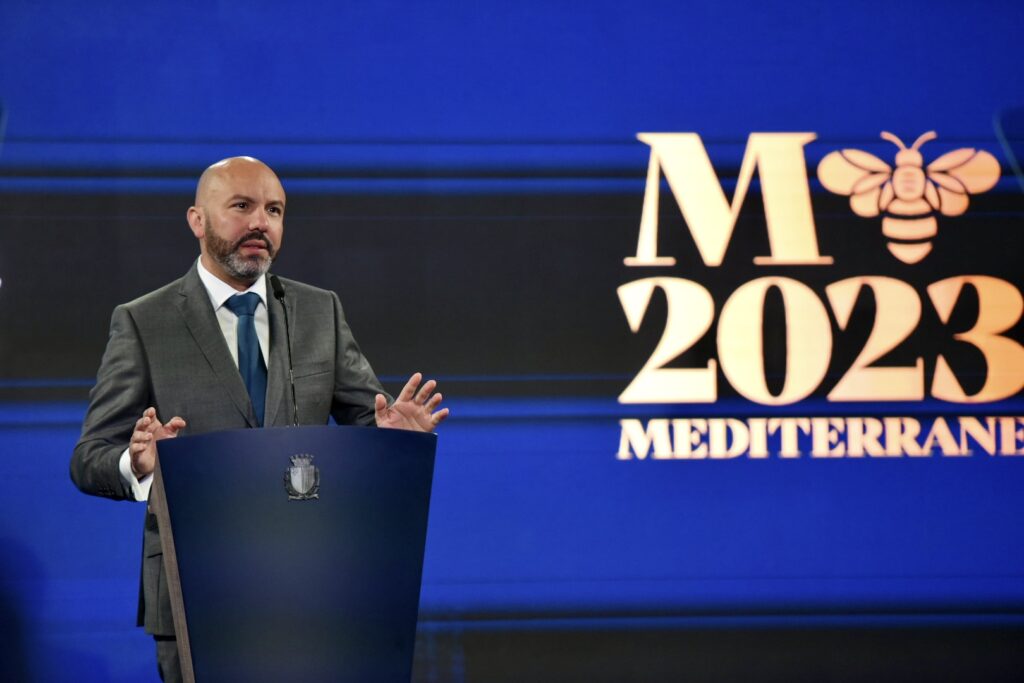
So where does the €7m come from?
According to the report, this is the total of what economists call the direct, indirect and induced economic impacts of the festival. These are all fairly typical measures through which the economic return of large-scale events is measured.
Direct impacts, as the name implies, refer to things that were directly connected to the festival – services supplied to the festival, ticket sales, payments to employees working on the festival, and so forth.
These are usually the most straightforward types of impacts to measure since they involve fewer assumptions and shots in the dark and are more likely to be based on actual figures.
The report’s authors calculate that the festival brought about just over €3.9m worth of direct impacts, roughly as much as the festival cost to organise.
This does not necessarily mean that the festival brought in €3.9m that wasn’t already circulating within Malta’s economy. It simply means that there was an estimated €3.9m in expenditure that can be directly attributed to the festival.
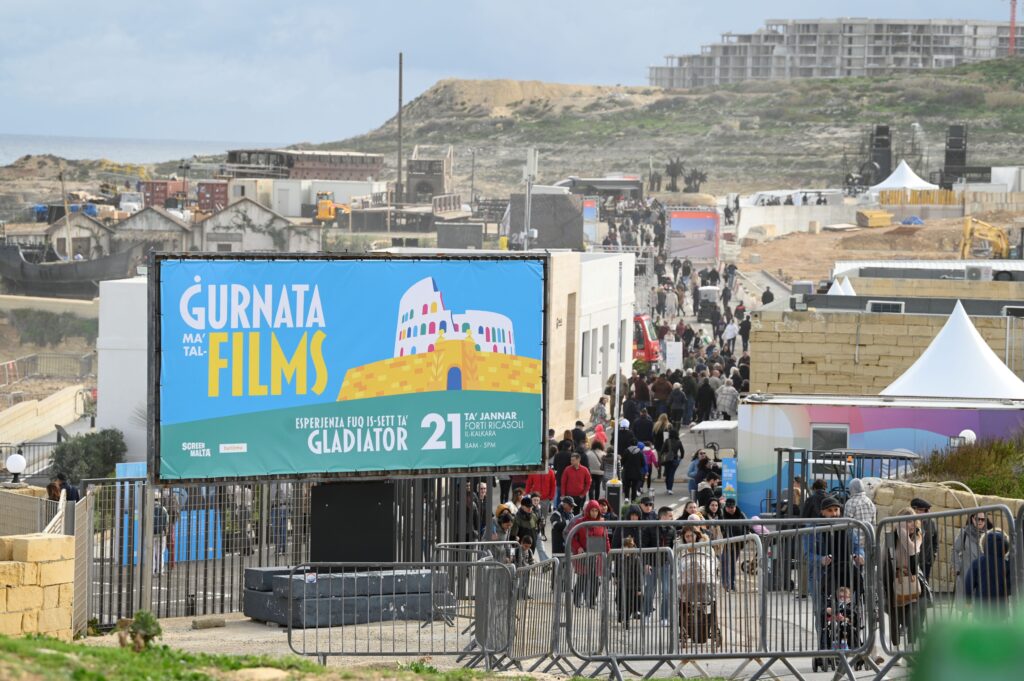
What about spillover effects?
Indirect and induced impacts refer to the spillover effects that the festival may have had on other industries that are not directly related to the festival.
So, in simple terms, if a person travelled to Malta to attend the festival and booked themselves into a hotel, their hotel bill would count towards the festival’s indirect economic impacts. The money then spent by that hotel because they have more bookings (hiring more cleaners or service staff, for instance) would be part of the festival’s induced impacts.
These sorts of impacts are a little tricky to determine since they are often based on assumptions, patterns of behaviour and estimates, rather than actual figures.
For instance, the report assumes that the 125 international delegates who paid their own way to the festival spent just as long in Malta as those international guests who had their travel and accommodation paid, without knowing whether or not this was the case.
On the back of this assumption, the authors calculate that the festival was responsible for 1,799 tourist bed nights and a tourism expenditure of over €179,000 once expenses are deducted. This balloons once it is multiplied to work out the festival’s indirect and induced impact. If the assumption is incorrect, these figures could be significantly different.
This type of economic impact assessment also assumes that the goods and services bought through money generated by the festival go towards the local economy, rather than leaving Malta’s shores. For example, if a foreign firm is engaged to provide services for the festival, that money wouldn’t actually be staying within Malta’s economy, despite having been originally funded through public funds.
Ultimately, the report’s authors conclude, in addition to the €3.9m directly generated by the festival, it also brought about a further €1.75m in indirect impacts and €1.3m in induced impacts, bringing the total up to just shy of €7m.
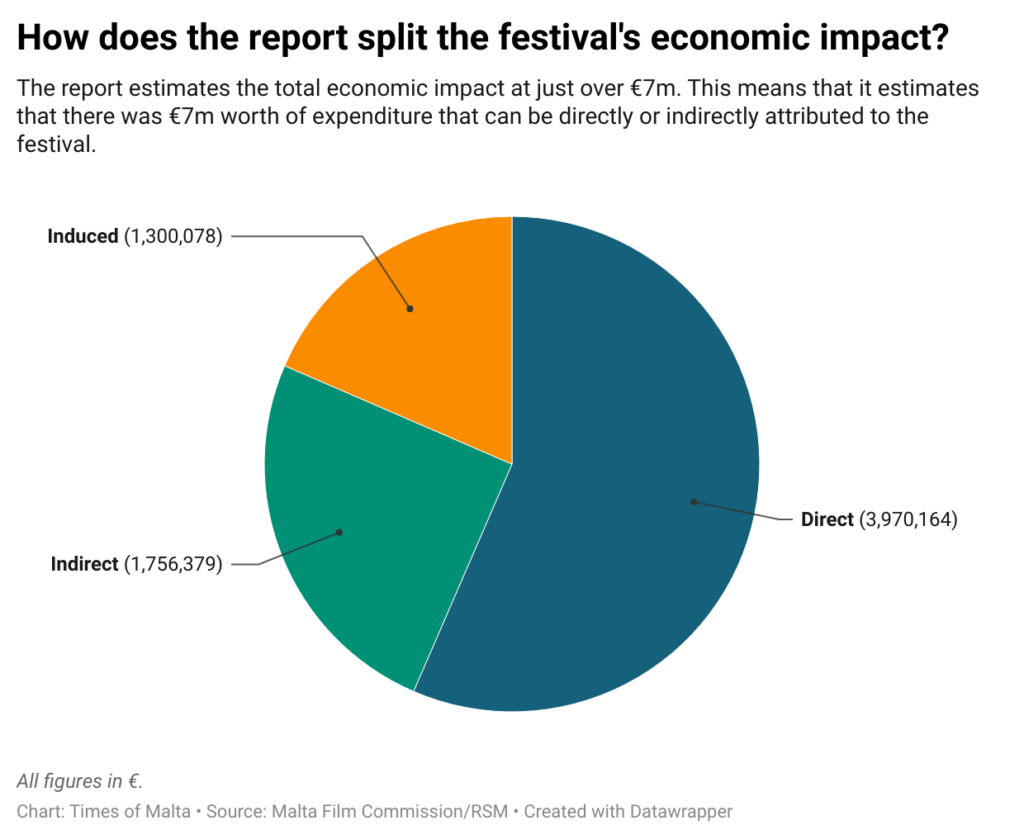
So did festival add €7m to Malta’s economy?
Not quite. The €7m estimated by the report’s authors refers to the festival’s outputs, that is the amount of economic activity taking place as a result of the festival. But, as the report itself says, this “does not measure the net impact on wealth creation”.
As the report explains, a better measure of how much the festival added to the economy is by calculating the gross value added, namely the difference between the price paid for a service and how much it actually costs to provide that service.
Let’s return to our previous example of a festival attendee checking into a hotel – if they paid €200 to spend a night in the hotel, that full €200 is counted as part of the festival’s economic output (and, by extension, is part of the €7m figure), but the gross value added deducts how much it costs the hotel to host the person (to clean the room, provide breakfast and so forth) from the €200 bill.
The report calculates that the ultimately directly added €1.4m to Malta’s economy, rising to €2.5m when indirect and induced impacts are also taken into account.
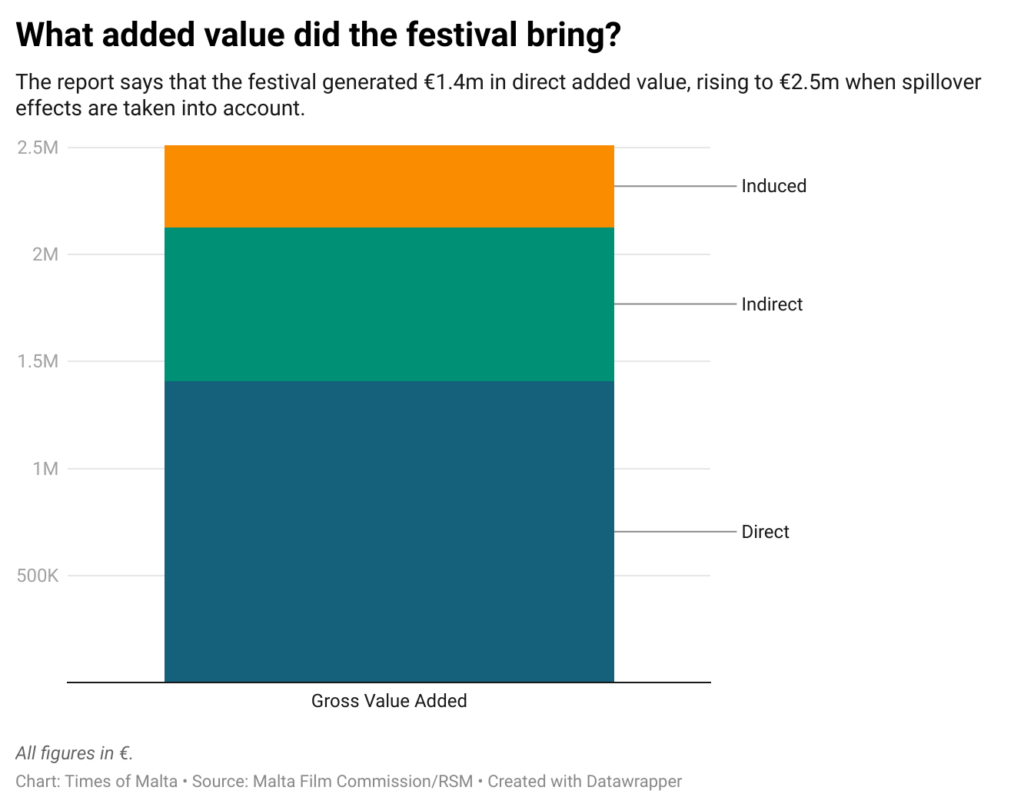
Verdict
The festival cost €3.8m to organise, but the report doesn’t give a detailed breakdown of these expenses.
The report estimates that the festival generated €3.9m worth of direct economic activity, which rises to €7m when this is multiplied to include all spillover effects.
However, the report says that a more accurate estimate of the festival’s contribution to Malta’s economy can be gleaned from calculating the gross value added, which it estimates at €1.4m rising to €2.5m when spillover effects are accounted for.
The Times of Malta fact-checking service forms part of the Mediterranean Digital Media Observatory (MedDMO) and the European Digital Media Observatory (EDMO), an independent observatory with hubs across all 27 EU member states that is funded by the EU’s Digital Europe programme. Fact-checks are based on our code of principles.
Let us know what you would like us to fact-check, understand our ratings system or see our answers to Frequently Asked Questions about the service.

